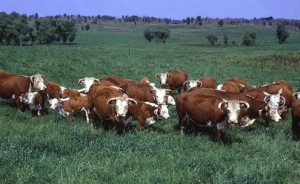Geraniol Use in Controlling Horn Flies on Cattle
go.ncsu.edu/readext?277779
en Español / em Português
El inglés es el idioma de control de esta página. En la medida en que haya algún conflicto entre la traducción al inglés y la traducción, el inglés prevalece.
Al hacer clic en el enlace de traducción se activa un servicio de traducción gratuito para convertir la página al español. Al igual que con cualquier traducción por Internet, la conversión no es sensible al contexto y puede que no traduzca el texto en su significado original. NC State Extension no garantiza la exactitud del texto traducido. Por favor, tenga en cuenta que algunas aplicaciones y/o servicios pueden no funcionar como se espera cuando se traducen.
Português
Inglês é o idioma de controle desta página. Na medida que haja algum conflito entre o texto original em Inglês e a tradução, o Inglês prevalece.
Ao clicar no link de tradução, um serviço gratuito de tradução será ativado para converter a página para o Português. Como em qualquer tradução pela internet, a conversão não é sensivel ao contexto e pode não ocorrer a tradução para o significado orginal. O serviço de Extensão da Carolina do Norte (NC State Extension) não garante a exatidão do texto traduzido. Por favor, observe que algumas funções ou serviços podem não funcionar como esperado após a tradução.
English
English is the controlling language of this page. To the extent there is any conflict between the English text and the translation, English controls.
Clicking on the translation link activates a free translation service to convert the page to Spanish. As with any Internet translation, the conversion is not context-sensitive and may not translate the text to its original meaning. NC State Extension does not guarantee the accuracy of the translated text. Please note that some applications and/or services may not function as expected when translated.
Collapse ▲The horn fly is the most important pests of pastured cattle in the United States. Flies feed on cattle, reducing milk production and weight by as much as 15%. Typically, dairy farmers manage horn flies by using broad-spectrum insecticides and must be applied two or three times per month.
For organic dairy farmers, however, there are few options available to manage the pest. Geraniol, a natural, minimal risk insect repellent, was listed as one of the products that could possibly repel flies. In 2007, North Carolina State University researcher Wes Watson used a Southern Region IPM Center IPM Enhancement Grant to test whether geraniol would repel the insects, and whether the substance would change the taste of the milk. Repeated experiments showed that horn flies were repelled from cattle treated with geraniol and did not return for at least 24 hours. The researcher recommended treating a small portion of the herd with a conventional insecticide (to kill insects repelled by the geraniol) and the majority of the herd with the geraniol. In addition, taste tests showed that geraniol was not detectable in milk, making it a substance that would not hamper dairy sales. For the 16-week season for horn flies, geraniol saves growers between $4 and $8 on other insecticides and gives them an alternative to permethrin, at a similar cost. As a result of the study, the Organic Materials Review Institute registered the first geraniol product for use on organic cattle as a fly repellent, and some organic pest control distributors are selling it online.
Written by: Rosemary Hallberg, Former Communication Specialist, Southern Region IPM Center



